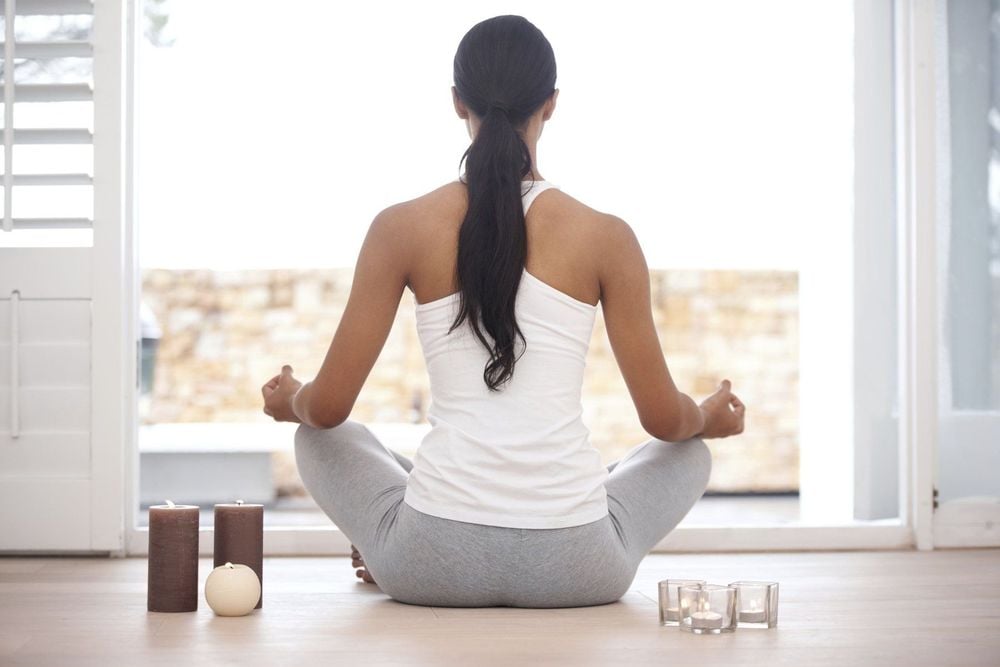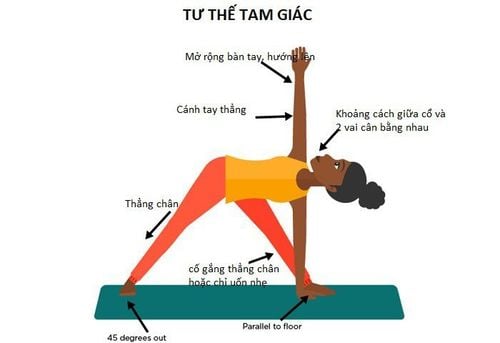This is an automatically translated article.
Pregnancy is the happiest period in a woman's life, but undeniably the stress and pressure that the body goes through is immense. Most women struggle with daily activities after giving birth, as the body is still dealing with the rigors of pregnancy and labor. Yoga is extremely beneficial and can help with postpartum recovery in the best way. So from what month should I practice Yoga after giving birth?1. Benefits of Practicing Yoga After Childbirth
Yoga is considered to bring many benefits to women after giving birth because of the following advantages:Difficult postpartum recovery: A woman's body undergoes great changes during pregnancy. These changes put a lot of stress on all parts of the body, plus the process of pregnancy and childbirth is fraught with pain. Practicing yoga after giving birth is often a great way to gradually ease the stress the body goes through during pregnancy. Weight loss: All women gain a little or a lot of weight during pregnancy. Taking in more nutrients than usual and carrying the extra weight of the baby makes it common for women to gain weight. Losing weight after giving birth is not easy. A little time each day to practice yoga can yield great results for weight loss. Increased stamina : Most of the mothers after giving birth are in poor health. Symptoms include: loss of stamina, muscle/joint pain and chronic exhaustion. Yoga will gently and slowly move the muscles and joints back to their original strength along with gradually increasing core strength and endurance. Regain position: Nine months of pregnancy and taking care of the baby after giving birth will definitely make a woman's normal body no longer as stable as before. The process of moving with the baby in the womb puts a burden on the spine. Breastfeeding and constantly lifting a baby after birth puts extra strain on the neck and shoulders. Yoga strengthens all the necessary muscles and joints and can even help women achieve more flexibility than they did before pregnancy. Psychological benefits: Yoga focuses on deep breathing, stretching and relaxing the body. The combination of movements and breathing improves blood circulation, while providing oxygen to the body. As such, yoga can induce a state of deep relaxation, reduce stress, and calm the body and mind.

Tập yoga có thể giúp phụ nữ phục hồi sau sinh, đem tới những lợi ích về mặt tâm lý
2. From what month should I practice Yoga after giving birth?
Doctors usually recommend a recovery period of six weeks for mothers who give birth vaginally and longer for mothers who have had a caesarean section. It's important to see your obstetrician or midwife to see if you have a separation of the abdominal muscles, which could affect your access to exercise again. Once your incision is fine and your obstetrician allows it, you can start practicing yoga again. There are women whose wounds take a long time to heal, especially accompanied by rapid heart rate and dizziness, need to see a doctor and must get a doctor's permission to start exercising.If you've been doing prenatal yoga, you've probably learned a thing or two about listening to your body and not trying too hard. Feel free to return to your yoga practice, keeping in mind that getting in shape is a process.
If you are breastfeeding, you may not be comfortable lying on your stomach in positions that cause chest compression, such as knees, chest, and chin. You can ask the trainers to change the posture accordingly.
3. Yoga poses for postpartum women
3.1. Bring your feet up to the wall This pose helps circulate blood around the body and initiates soothing and healing in the body, hold for at least 8 minutes to gain all the restorative benefits. Start in a position leaning along the wall. Turn until your butt touches the wall and walk your feet up the wall perpendicular to your body.You can put a pillow under your lower back, on your stomach or on your feet for an extra sense of peace.
3.2. Using a Plank To start working your abs and toning your back after pregnancy, hold a Plank or modify with a Forearm Plank. If your back is facing the earth, lower your knees to support your spine. It is a sign that the abdominal muscles are not strong enough.
Start with 5 breaths and gradually increase to longer holdings. Be patient with your abdominal wall, especially if you've given birth once.
3.3. Triangle Pose Also known as Trikonasana, this shape will benefit the pelvic floor. Legs can be pretty strong after pregnancy, so use them to stretch your back and start working out your pelvic floor muscles.
Stand with your feet wide and rotate your right foot forward with the back heel to align with the arch of the forefoot. Straighten your legs and activate strong thigh muscles. Place your hands on your hips and push your hips toward your back foot. Press your chest toward the mat and try to keep the right rib cage level with the left rib cage as you lean forward. Stop when you feel your lower ribs begin to find the arch.
Do any arm variation that feels good, remember this isn't about reaching or reaching the floor, but strengthening the pelvic floor and to do that you usually have to keep your posture. higher position.

Tư thế này sẽ rất có lợi cho sàn chậu
Make sure you can always see your toes in front of the knee and try to keep a small space between the knees even if they are pressed together. You can even keep your feet hip-width apart and place a block between your thighs.
3.5. Marichyasana I Strengthen your organs and stretch the back of your hips and your entire lower back side by side with this sitting pose. Be patient if your belly still hurts and it prevents you from pulling your legs into your torso.
To practice, start sitting with left leg extended and right leg bent, feet on the floor (knee equals right shoulder). Reach your left hand behind your back and grab the strap, reach your right arm around your shin and snap the strap somewhere along your back or thigh.
Take a deep breath to burn your arms and start walking your fingers towards each other on the strap. As you exhale, lean forward when it feels good. Always do it gently, using as many props as possible to make sure your mind and body both feel safely supported. Treat this as a time of gentle relaxation and postpartum recovery takes patience and will.
Depending on each person's condition, the time to practice yoga after giving birth may be different. However, for exercise to be effective, women need to be persistent and choose exercises that are suitable for their own health. Besides, maintain a healthy diet and scientific lifestyle every day.

Bên cạnh việc tập luyện yoga, các mẹ hãy cố gắng thiết lập và duy trì một chế độ ăn lành mạnh
Please dial HOTLINE for more information or register for an appointment HERE. Download MyVinmec app to make appointments faster and to manage your bookings easily.
Reference source: verywellfit - doyou - parenting












